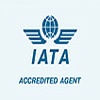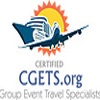 Australia has quokkas, kangaroos and koalas. Kids of all ages (especially grown ups) are enchanted with this idea of connecting with Australian wild life.
Australia has quokkas, kangaroos and koalas. Kids of all ages (especially grown ups) are enchanted with this idea of connecting with Australian wild life.
That said Australia is SO much more! It's a perfect destination for newbie travelers, intrepid explorers and everyone in between. It's easy to navigated if this is your family's first time traveling overseas and they speak the same language...well, sort of. If your family are experienced travelers Australia offers boundless activities and a world of extreme adventures.
Properly planning a trip with the kids to Australia takes time. Chances are if you're a busy parent and reading this post your time is extremely limited. No Worries as they say Down Under - Vacationkids has you covered mate. One of our travel agents, Tamara McDonald was born and raised in Oz. She's a mom with 3 little ones so she understands what parents need and what kids want out of an Australian holiday.
Tamara says "There is NO "one size fits all" Australian vacation package that is "best" for families. The "best" itinerary is the one that is customized to your kid's ages, your families specific interests and one that fits your budget."
Tamara can save you time, weeks of hunting and hours of online research because she's lived it. If you're the type that enjoys spending hours online then by all means go for it. She understand that for some folks, doing vacation homework is half the fun of a vacation! Still she says parents can achieve more confidence and peace of mind after speaking with her. She can give you professional advice and tricks from a local perspective that will make your Australian vacation sparkle and shine.
To get started on your journey to Australia, Tamara offers these tips for you to consider first....
1. Length of stay - Australia is approximately 14 hours nonstop from the west coast. East coast families might want to consider a stop over in California or Hawaii for some extra fun. On average an economy plane ticket will cost $1000-$1500 per person. Flight costs will consume a significant portion of your budget. In addition, your family will be crossing several times zones and the international date line. For example if your flight left Los Angeles on March 5th at 10.30 pm and flew non stop, your family would be arriving in Sydney on March 7th at 8.30 am! There will be significant Jet lag which is no small matter especially when traveling with kids. For this reason, you'll need to have an easy schedule the first 2 days to give everyone time to adjust. These extra days are important to factor into your schedule unless you like the idea of vacationing with cranky kids. For these reasons, you'll want to stay in Australia for as LONG as your schedule permits. Again for these reasons Tamara suggests a 2 week itinerary at the very minimum.
2. Size of Australia - Australia is roughly the same size as the 48 contiguous states here in the U.S. It is a vast country that can be basically divided into 3 regions - beach, bush and outback.
- The beach is pretty much self explanatory and Australia has some of the best in the world not to mention the great barrier reef.
- The Outback describes the millions of miles of vast, remote, mostly unpopulated interior of Australia. Its gateway is the isolated town of Alice Springs and its landmarks include Uluru/Ayers Rock, Australia's iconic red-rock monolith.
- The Bush is a local term to describe everything in between the beach and the outback. This includes the mountains, countryside and rain forests areas a bit closer to civilization.
For a quick "reality check" - most U.S. visitors arrive in Sydney. It's a 30 hour drive or 3.5 hour flight to get from Sydney to Ayers Rock in the Outback. It's 1500 miles from Sydney to Cairns which is the most popular spot to visit if spectacular rainforests and the Great Barrier Reef are on your "must see list". This is why you need time to see Australia properly.
When is the Best Time to Visit - Just as the U.S. has an range of different climates and seasons, so does Australia. The difference here is Australia is located south of the equator so their seasons are opposite to ours here in the U.S. Australia's northern states are typically warm year-round, while the southern states have cooler winters. December to February is summer; March to May is autumn; June to August is winter; and September to November is spring.
Summer is high season in Australia so that is when prices for flights and hotels will be at their max. You'll get your best deals traveling to Australia during July - August which is their winter. Average "winter" temperatures in Sydney that time of year is 55 degrees in the south while temperatures in Cairns will be about 80 degrees.
Setting Priorities - Just like you can't see ALL of the U.S. in two weeks, the same holds true for Australia. This is one of those situations where quality beats quantity. Clear focus will create an itinerary that is customized to the needs and wishes of your family. To keep the kids fully engaged in this adventure, you'll also need to factor in age appropriate activities. Creating a balanced vacation for the entire family, may mean separate sightseeing - Dad may take the kids to the zoo one day while mom explores a local vineyard. The following morning is spent together on the beach allowing dad to enjoy some amazing snorkeling.
How much moving do you want to do - You'll need to balance the amount of traveling you'll want to do once you arrive in Australia with your "must see" list of priorities. Obviously if you're traveling with teens you can cover a great deal more territory quickly compared to traveling with a toddler. Many parents like the idea of being a participant in their own vacation. This is the reason guided tours are so popular. You fly to Australia, meet up with your guide and then you can sit back and relax. Your guide handles all the logistics, sightseeing and transportation while sharing valuable insights.
While tours do offer a wide range of different itineraries they don't work for every family. Most guided tours have age restrictions and don't welcome younger kids. If your heart is set on a guided tour there is a way around this rule but creating a private tour experience. This option can be costly for just one family but you do enjoy a very customized, VIP experience. By simply inviting a few friends and family members to join your Australian adventure a private tour can be extremely affordable, even free.
A cruise around Australia may work better for some families.. Younger families appreciate that a cruise ship moves while they are sleeping offering an easy way to see a great deal of Australia without packing and unpacking. In addition, most family friendly cruise lines offer onboard child care while in port which affords parents some adult sightseeing time.
Other families may crave their independence and freedom. This can be done with car rentals that is of course if you're comfortable driving on the left. In addition there is camper rentals, air and train passes and public transport. Accommodations can range from 5 star resorts to outback camping.
Get the kids involved - If your kids are old enough, let them contribute with your Australian travel planning. Tamara says "kids keep it real". Often parents over think things while it's often the simple pleasures that make kids happy. Things like a picnic, meeting local kids at a playground or a great pool is all it takes to make little ones happy.
Here at Vacationkids we have a saying - planning a vacation is like planning a family, you really need to start working about 9 months in advance. So do your best to plan ahead and be sure to say...."G'day mate, how ya going" to Tamara our Vacationkids Aussie and she'll know exactly what you need!






